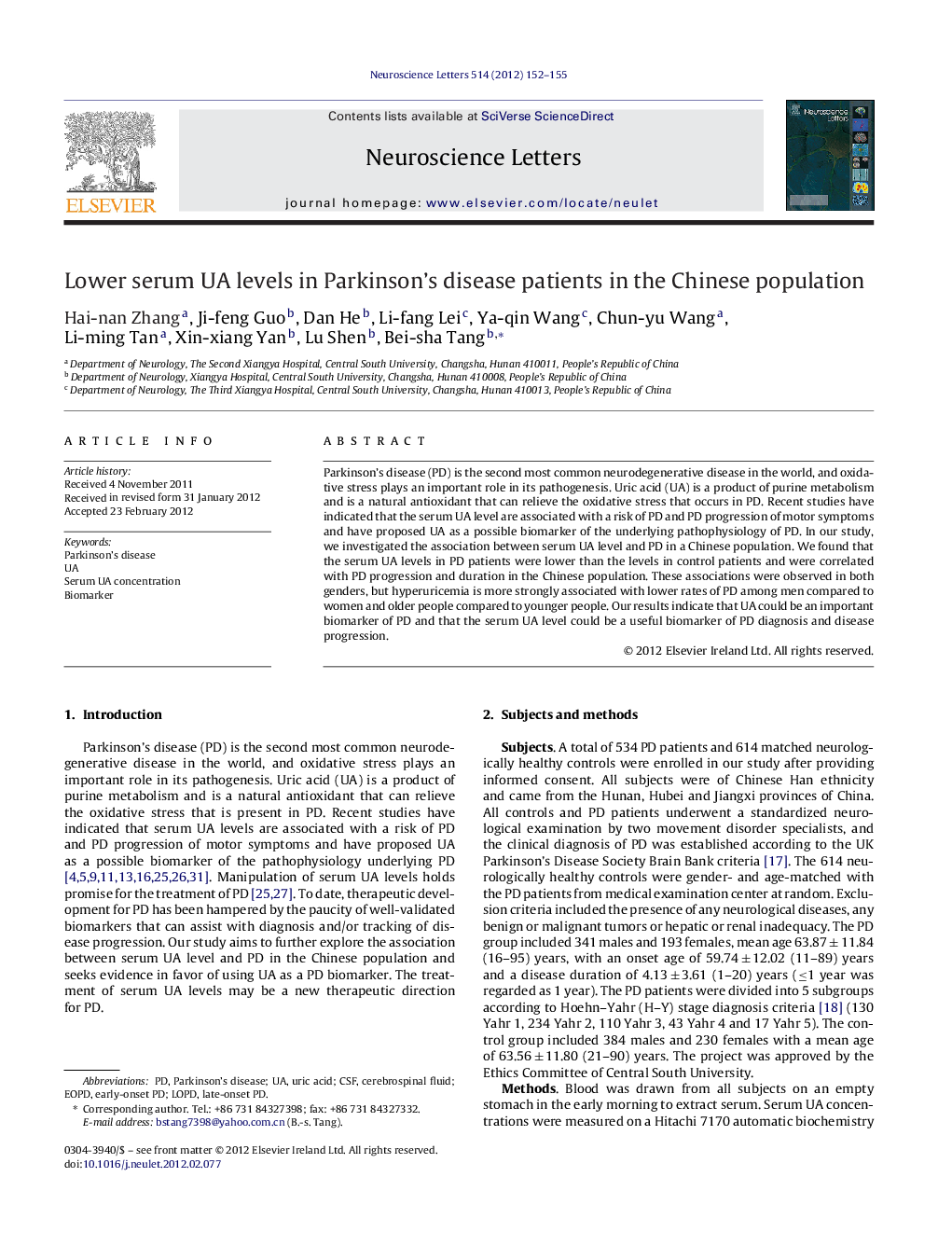| Article ID | Journal | Published Year | Pages | File Type |
|---|---|---|---|---|
| 4344664 | Neuroscience Letters | 2012 | 4 Pages |
Parkinson's disease (PD) is the second most common neurodegenerative disease in the world, and oxidative stress plays an important role in its pathogenesis. Uric acid (UA) is a product of purine metabolism and is a natural antioxidant that can relieve the oxidative stress that occurs in PD. Recent studies have indicated that the serum UA level are associated with a risk of PD and PD progression of motor symptoms and have proposed UA as a possible biomarker of the underlying pathophysiology of PD. In our study, we investigated the association between serum UA level and PD in a Chinese population. We found that the serum UA levels in PD patients were lower than the levels in control patients and were correlated with PD progression and duration in the Chinese population. These associations were observed in both genders, but hyperuricemia is more strongly associated with lower rates of PD among men compared to women and older people compared to younger people. Our results indicate that UA could be an important biomarker of PD and that the serum UA level could be a useful biomarker of PD diagnosis and disease progression.
► This is the first large scale report on SU levels in PD patients in mainland China. ► The SU levels were correlated with PD and PD progression in our study. ► Hyperuricemia is more strongly associated with lower rates of PD among men and older people. ► The SU level could be a useful biomarker of PD diagnosis and disease progression.
